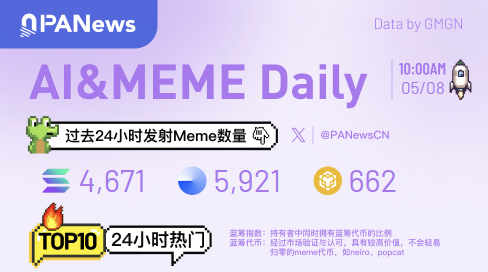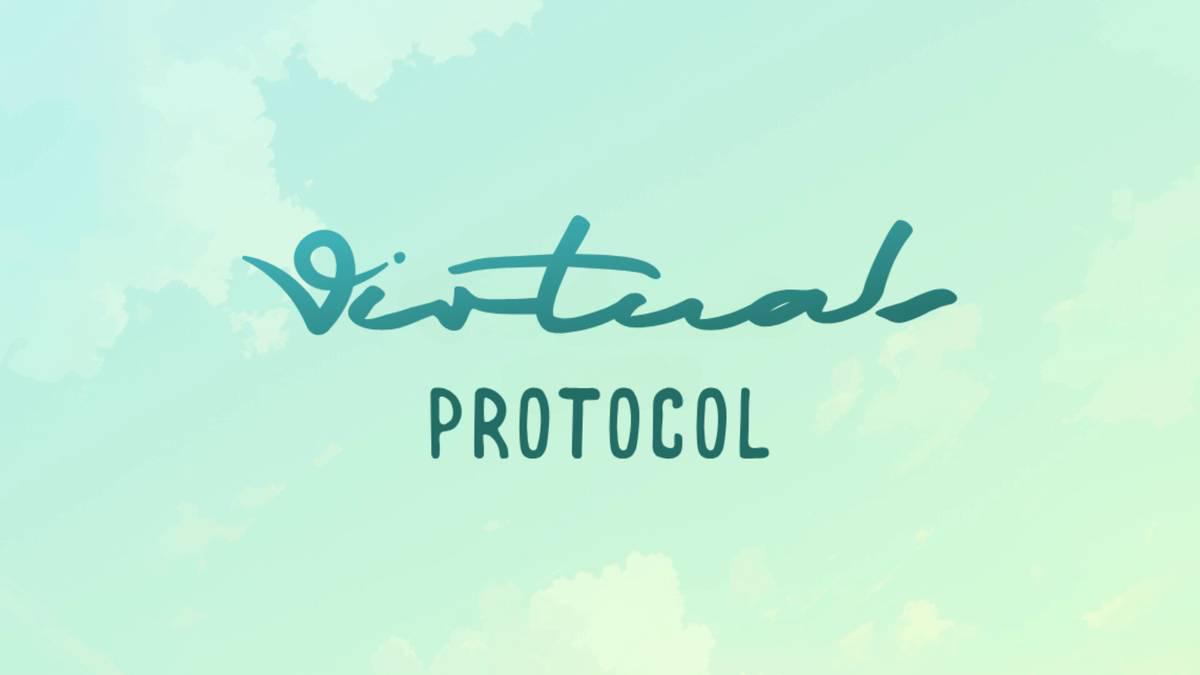- MEME ecological restoration in progress: the front effect helps funds and sentiment to recover, but liquidity still needs to be broken
- Important information from last night and this morning (May 7-May 8)
- Solana presents a new way to play MEV, with atomic arbitrage accounting for half of the transactions. Is it a hidden vault or a new sickle?
-
 OKX · an hour ago
The final battle of the 10-year evolution of account abstraction: looking at the past and the future through EIP-7702
OKX · an hour ago
The final battle of the 10-year evolution of account abstraction: looking at the past and the future through EIP-7702OKX Research Institute report is here! The first issue focuses on the hottest topic in the community recently - EIP-7702. We use an in-depth analysis of nearly 10,000 words to help you understand its ins and outs: Why is it called the "ultimate form" of account abstraction? What problems does it solve? What does the Pectra upgrade mean to wallets, developers and ordinary users?
-
 PA一线 · an hour ago
Bitget and Avalanche join forces to enter India and launch a $10 million Web3 development plan
PA一线 · an hour ago
Bitget and Avalanche join forces to enter India and launch a $10 million Web3 development planAt least $10 million will be invested to support local Web3 communities, including microgrants, scholarships, hackathons and workshops, with the first batch focusing on Delhi and Bangalore.
-
 Tiger Research · 2 hours ago
How Stablecoins Could Change Global Trade Beyond Sanctions
Tiger Research · 2 hours ago
How Stablecoins Could Change Global Trade Beyond SanctionsStill waters run deep, and big changes are coming. How will stablecoins get involved in geopolitical trade?
-
 Techub News · 3 hours ago
Looking at Crypto's "emotional changes" from Peter Thiel's four quadrants: from cypherpunks to "standardization seekers"
Techub News · 3 hours ago
Looking at Crypto's "emotional changes" from Peter Thiel's four quadrants: from cypherpunks to "standardization seekers"From idealism to speculative frenzy to realistic compromise, Crypto has failed to deliver on its initial revolutionary promise, but it has not failed completely. Instead, it has entered a more pragmatic stage.
- PA Daily | Futu Securities launches BTC, ETH and USDT deposit services; China’s central bank announces interest rate cuts and reserve requirement ratio cuts PA Daily | Ethereum Pectra upgrade will be launched on May 7; Bernstein predicts that companies will purchase another $330 billion of BTC by 2029 PA Daily | PumpFun’s annual fee income exceeds Ethereum; Trump made it clear that he will not seek a third term
 PA一线 · 3 hours ago
Important information from last night and this morning (May 7-May 8)
PA一线 · 3 hours ago
Important information from last night and this morning (May 7-May 8)Stripe launches stablecoin financial accounts to support merchants in 101 countries; the Federal Reserve keeps interest rates unchanged for the third time, warning that the risks of high inflation and high unemployment are rising simultaneously; Vaulta: EOS tokens will become A tokens on May 14, with a redemption ratio of 1:1.
-
 Nancy · 3 hours ago
MEME ecological restoration in progress: the front effect helps funds and sentiment to recover, but liquidity still needs to be broken
Nancy · 3 hours ago
MEME ecological restoration in progress: the front effect helps funds and sentiment to recover, but liquidity still needs to be brokenRecently, the sentiment of the MEME market has gradually warmed up, but the overall ecosystem is still in the early stages of recovery, and the confidence of funds has not yet fully recovered. At the same time, in the context of insufficient liquidity and high emotional sensitivity, the head effect has gradually become the core driving force of traffic and funds, especially the synergy of platforms and tools has further amplified the market influence of the head, making it a key variable in the flow of funds and emotional fluctuations.
-
 PA一线 · 4 hours ago
Binance will perform wallet maintenance on the TRON network on May 9
PA一线 · 4 hours ago
Binance will perform wallet maintenance on the TRON network on May 9Deposits and withdrawals of the network will be suspended from 14:55 on May 9. The maintenance is expected to last about 1 hour. During this period, transactions of TRX and its tokens will not be affected.
-
 链上观 · 4 hours ago
From LayerZero to ZK Layer1, how does Union open the era of cross-chain interoperability 2.0?
链上观 · 4 hours ago
From LayerZero to ZK Layer1, how does Union open the era of cross-chain interoperability 2.0?What is the difference between the cross-chain interoperability project Union and other projects? What are the highlights? Will it bring new opportunities to the ZK infra track?
-
 吴说区块链 · 5 hours ago
Dialogue with Arthur Hayes: The Sino-US trade war is a long-term trend, and Bitcoin will exceed $1 million by 2028
吴说区块链 · 5 hours ago
Dialogue with Arthur Hayes: The Sino-US trade war is a long-term trend, and Bitcoin will exceed $1 million by 2028In this podcast, Kyle Chasse and Arthur Hayes take a deep dive into the logic behind why Bitcoin could break $1 million by 2028.
- Crypto Circulating Market Cap (7d)$3,096,228,493,079Market CapFear and Greed Index (Last 30 Days)Extreme Fear1 Days(3.33%)Fear10 Days(33.33%)Neutral10 Days(33.33%)Greed9 Days(30%)Extreme Greed0 Days(0%)
 PA一线 · 6 hours ago
Coinbase announces the launch of PAX Gold (PAXG) trading pairs
PA一线 · 6 hours ago
Coinbase announces the launch of PAX Gold (PAXG) trading pairsCoinbase will launch support for PAX Gold (PAXG) tokens on the Ethereum network and gradually open PAXG-USD trading pairs from 00:00 Beijing time on May 9 after liquidity conditions are met.
-
 Odaily星球日报 · 6 hours ago
Virtuals IPO boom continues, here is a list of popular AI projects
Odaily星球日报 · 6 hours ago
Virtuals IPO boom continues, here is a list of popular AI projectsThe overall market value of Genesis' popular projects is relatively small, and there may be opportunities for "second entry".
-
 PA一线 · 6 hours ago
OpenAI launches the "OpenAI for Countries" program, and will cooperate with 10 countries or regions in the first phase
PA一线 · 6 hours ago
OpenAI launches the "OpenAI for Countries" program, and will cooperate with 10 countries or regions in the first phaseThe program is part of the Stargate project. In the first phase, it will cooperate with 10 countries or regions to provide local data centers, customized ChatGPT and national AI startup funds to promote AI applications in areas such as medical care, education and public services.
-
 PA一线 · 7 hours ago
Stripe launches stablecoin financial accounts to support merchants in 101 countries
PA一线 · 7 hours ago
Stripe launches stablecoin financial accounts to support merchants in 101 countriesStripe announced the launch of "Stablecoin Financial Accounts", which supports corporate users in 101 countries and regions around the world who hold USDC or USDB stablecoin balances and can send and receive funds through fiat and crypto channels. USDB is an infrastructure stablecoin issued by Bridge.
-
 马里奥看Web3 · 7 hours ago
Pro-crypto policies drive the RWA narrative for US stocks, interpreting the opportunities and challenges of tokenized stocks
马里奥看Web3 · 7 hours ago
Pro-crypto policies drive the RWA narrative for US stocks, interpreting the opportunities and challenges of tokenized stocksThe RWA track, which is under favorable regulatory policies, is also gaining increasing attention from the crypto industry.
-
 PA一线 · 7 hours ago
The Fed kept interest rates unchanged for the third time, warning that the risks of high inflation and high unemployment are rising simultaneously
PA一线 · 7 hours ago
The Fed kept interest rates unchanged for the third time, warning that the risks of high inflation and high unemployment are rising simultaneouslyThe Federal Reserve kept interest rates unchanged for the third time, maintaining the benchmark interest rate target range at 4.25%-4.50%, in line with market expectations
-
 PA一线 · 15 hours ago
David Bailey, who once provided crypto policy advice to Trump, plans to set up a Bitcoin investment company to raise $300 million
PA一线 · 15 hours ago
David Bailey, who once provided crypto policy advice to Trump, plans to set up a Bitcoin investment company to raise $300 millionDavid Bailey, who advised Trump on cryptocurrency policy during his 2024 campaign, is raising $300 million to launch a publicly traded Bitcoin investment firm, according to people familiar with the matter. He follows a string of companies that have acquired cryptocurrencies in an attempt to replicate the success of Michael Saylor's strategy. Bailey plans to raise $200 million through a private placement of new shares and $100 million through convertible bonds.
-
 PA图说 · 15 hours ago
Progress of Bitcoin Strategic Reserve Bills in U.S. States | Continuous Update
PA图说 · 15 hours ago
Progress of Bitcoin Strategic Reserve Bills in U.S. States | Continuous UpdateNew Hampshire officially signed the HB 302 bill, becoming the first state in the United States to pass the "Strategic Bitcoin Reserve" (SBR) legislation. PA Graphics summarizes the latest progress of Bitcoin strategic reserve bills in various states in the United States.
-
 PA一线 · 17 hours ago
Vaulta: EOS tokens will become A tokens on May 14, with a 1:1 exchange ratio
PA一线 · 17 hours ago
Vaulta: EOS tokens will become A tokens on May 14, with a 1:1 exchange ratioWeb3 bank Vaulta (formerly EOS) announced on the X platform that EOS tokens will become A tokens on May 14. The exchange ratio is 1:1, the token economics have not changed, there is no exchange fee, and the exchange can be completed on May 14 through official channels.
-
 Foresight News · 17 hours ago
Data Verification: Is Bitcoin Decoupling from Traditional Markets?
Foresight News · 17 hours ago
Data Verification: Is Bitcoin Decoupling from Traditional Markets?As a unique asset class, Bitcoin will develop its own market.
PANews - Your Web3 Information Officer
Download PANews to track in-depth articles















 Meme日报 · 4 hours ago
Meme日报 · 4 hours ago


































